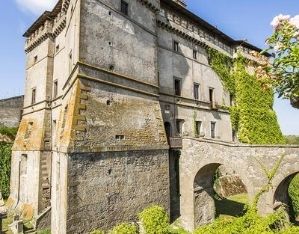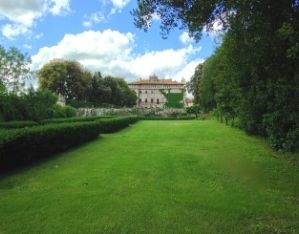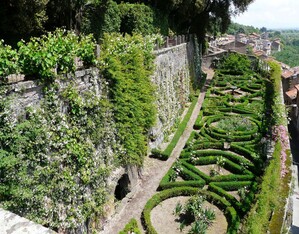An austere and majestic fortress dominating the town below evoking a time of war and conflicts. But over the bridge and through the entrance hall, we step into an enchanted garden, where time has stopped, where one can almost hear the sound of the music composed by one of this castle’s illustrious guests: Georg Friedrich Handel.
On a rocky spur located between two deep valleys there once was an old Benedictine citadel that during a time of violent conflicts for the rule of the area became a pontifical stronghold entrusted to Beatrice Farnese in 1531. It later became a property of the Marescotti family, then passed to the Ruspolis, a family of commanders who engaged in fierce struggles for generations. An inscription on the back portal, facing the drawbridge, reminds us that in 1611 Ottavia Orsini, daughter of Vicino, the creator of the Sacro Bosco di Bomarzo, while her husband was out at war commissioned the constitution of an elaborate garden on a large expanse of land she owned. Twelve compartments delimited by mixed bay, laurel, viburnum, myrtle and box hedges with lower all-box hedges give rise to a harmonious pattern surrounding a beautiful central fountain with a mixtilinear basin with a balustrade. At the corners of each garden section there are vases with family emblems with valuable citrus trees growing in them. Majestic time-honoured holm oaks delimit the garden. At the centre of the main sections, box hedges inscribe the initials of Ottavia and of her sons Sforza and Galeazzo, testifying how the 17th century layout has remained unchanged, thanks to the care of the family that has taken care of the property to this day. The castle’s upper floors afford a fabulous view of the parterre, drawing the eye towards the Marescotta woods. On a terracing situated at a lower level, there is a secret garden dating to the first half of the 20th century.




